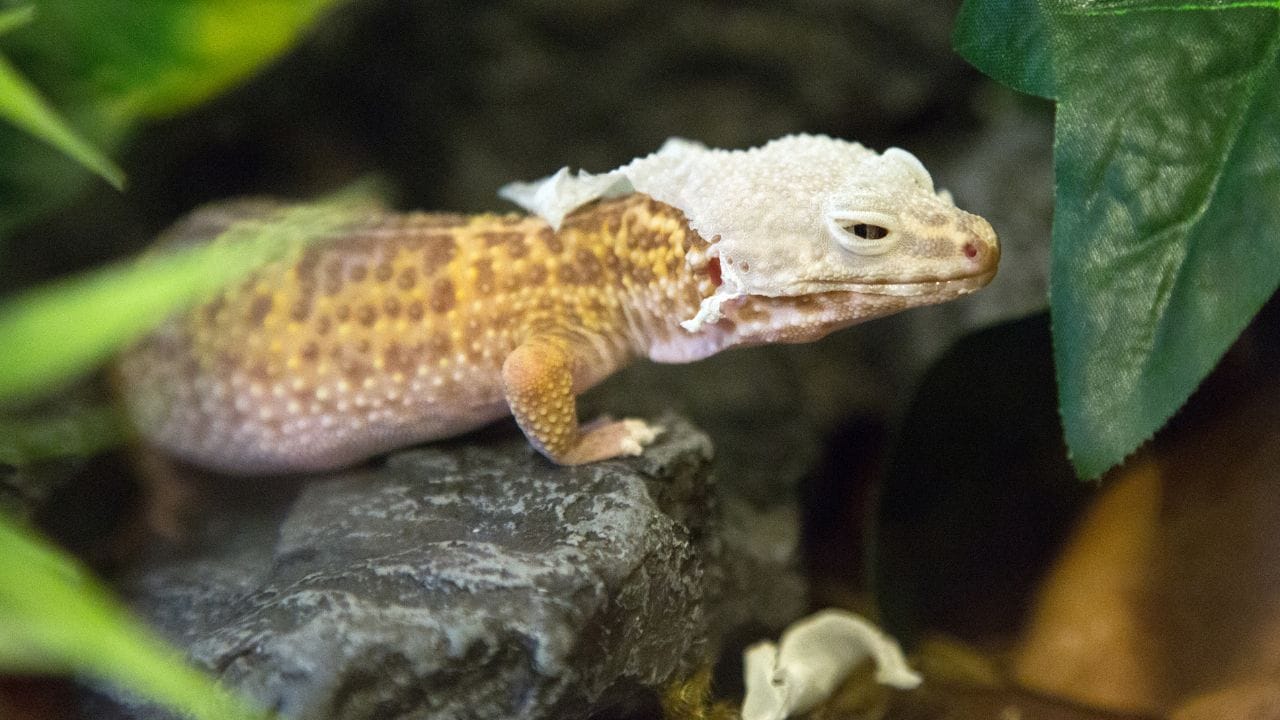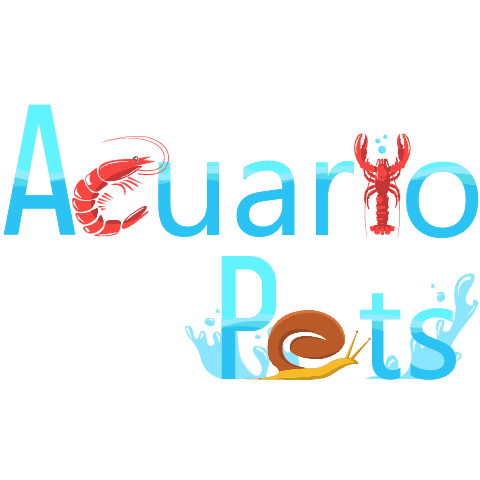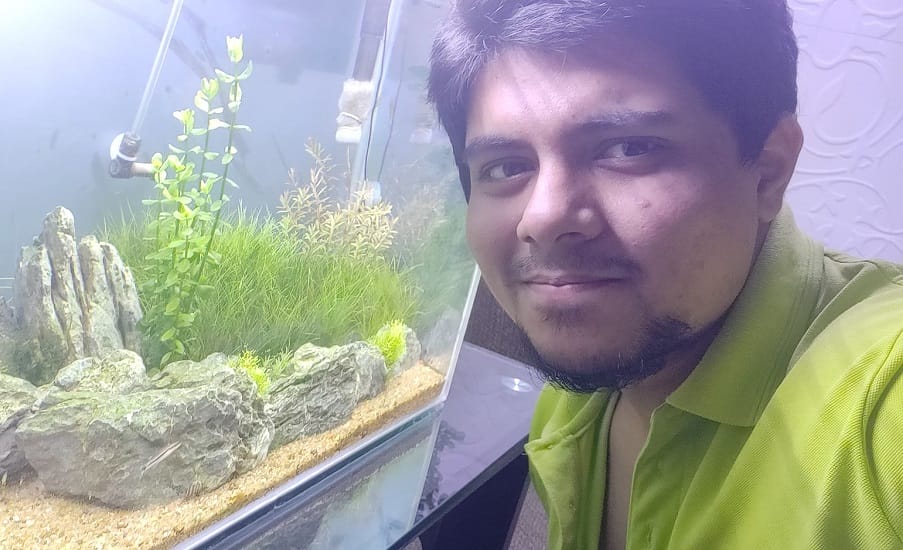This post was created with help from AI tools and carefully reviewed by a human (Muntaseer Rahman) . For more on how we use AI on this site, check out our Editorial Policy.
Check Out These FREE Tools We Made JUST For You!
How I Fixed the Humidity Problem in My Gecko’s Tank

Humidity can sneak up on your leopard gecko fast. One day the tank feels normal, the next it’s damp and foggy. That’s not just annoying—it can make your gecko sick.
I’ve dealt with this myself, and here’s what I’ve learned: if the humidity stays above 40%, your gecko might develop breathing issues, skin problems, or just stop acting like itself.
Let me show you what causes high humidity and how to bring it down—step by step.
Why Leopard Geckos Hate High Humidity
Leopard geckos come from dry, rocky deserts—not rainforests. Their bodies are built for low moisture, warm air, and cool hides.
When the air gets too humid, their lungs struggle. They might breathe heavily, get infections, or just act off. You’ll also notice skin problems, like stuck shed or weird damp patches.
Worse? High humidity encourages mold, bacteria, and fungus inside the tank. That’s like inviting sickness into your gecko’s home.
So if the air feels sticky, or you see fog on the glass, it’s time to fix it. Fast.
Ideal Humidity Levels (And Why It Matters)
Leopard geckos need a dry setup—ideally between 30% to 40% humidity. That matches the natural conditions they’re used to in the wild.
If it goes a little higher for a few hours, no big deal. But anything over 50% for too long can start causing problems. Breathing issues, skin infections, and general stress.
There’s one exception though: during shedding, they need a little more humidity—but only in a small humid hide, not the whole tank.
Keep the main enclosure dry. That’s what keeps them healthy and active.

How to Tell If the Tank Is Too Humid
The easiest way? Use a hygrometer. Stick it in the middle of the tank, away from the water dish or plants. If it reads over 40%, you’ve got a humidity problem.
Don’t trust just one reading—humidity changes across the tank. Put one on the warm side, one on the cool side, and check both.
You can also spot signs without any tools. Foggy glass, water droplets on the walls, or a musty smell mean trouble. Mold in the corners? That’s a big red flag.
If your gecko’s breathing weirdly or spending too much time outside the hides, high humidity might be the reason.
8 Simple Ways to Lower Tank Humidity
You don’t need fancy gear to fix humidity issues. Try these:
Increase Ventilation
Swap out a solid top for a mesh lid. It lets moist air escape. You can also add a small USB fan aimed across the screen to speed it up.
Let Room Air Flow
If the whole room is humid, the tank will be too. Open a window. Run a fan. Keep the air moving. If possible, place the tank in a drier room.
Use a Smaller Water Dish
A big bowl adds more moisture to the air. Switch to a smaller one and place it on the cool side. That slows down evaporation.
Add a Mini Dehumidifier or Heat Emitter
A small reptile-safe dehumidifier can drop the humidity by 5–10%. Or use a ceramic heat emitter—it dries the air without adding light. Just make sure it’s not too close to your gecko.
Change the Substrate
Soil, coconut fiber, and moss trap moisture. Use paper towels, reptile carpet, or tile instead. They stay dry and don’t mess with humidity.
Remove or Replace Real Plants
Live plants give off moisture. Fake plants won’t. Simple switch. Looks the same—without the extra humidity.
Move the Water Dish to the Cool Side
Warm areas cause water to evaporate faster. Put the dish on the cool side so it stays calm and doesn’t fog up the tank.
Skip the Rice Trick
Some say dry rice in a sock helps. Honestly? It’s not reliable for tanks. You’re better off improving airflow or using a real dehumidifier.

Do They Ever Need Extra Humidity? (Only During Shedding)
Most of the time, your gecko needs a dry tank. But during shedding, a little extra humidity helps loosen the old skin.
That doesn’t mean you should crank up the whole tank’s humidity. Just give them a humid hide—a small enclosed space filled with damp sphagnum moss or moist paper towels.
It should feel humid inside but stay separate from the main environment. Once the shedding is done, remove the moisture and go back to dry.
Only the hide gets humid. Not the whole tank.
How to Measure Humidity Accurately
Get a digital hygrometer with a probe. The cheap dial ones aren’t reliable.
Place the probe in the middle of the tank, away from the water bowl or any plants. That gives you the most balanced reading.
To be extra sure, add a second hygrometer on the warm side and another on the cool side. Humidity levels can vary across the tank.
Check it daily—especially during seasonal changes or bad weather. Don’t guess. Let the numbers guide you.
Let me know if I should move on to the final section.
About Author
Hello, I’m Muntaseer Rahman, the owner of AcuarioPets.com. I’m passionate about aquarium pets like shrimps, snails, crabs, and crayfish. I’ve created this website to share my expertise and help you provide better care for these amazing pets.
Disclaimer
This site is owned and operated by Muntaseer Rahman. AcuarioPets.com is a participant in the Amazon Services LLC Associates Program, an affiliate advertising program designed to provide a means for sites to earn advertising fees by advertising and linking to Amazon.com. This site also participates in other affiliate programs and is compensated for referring traffic and business to these companies.

